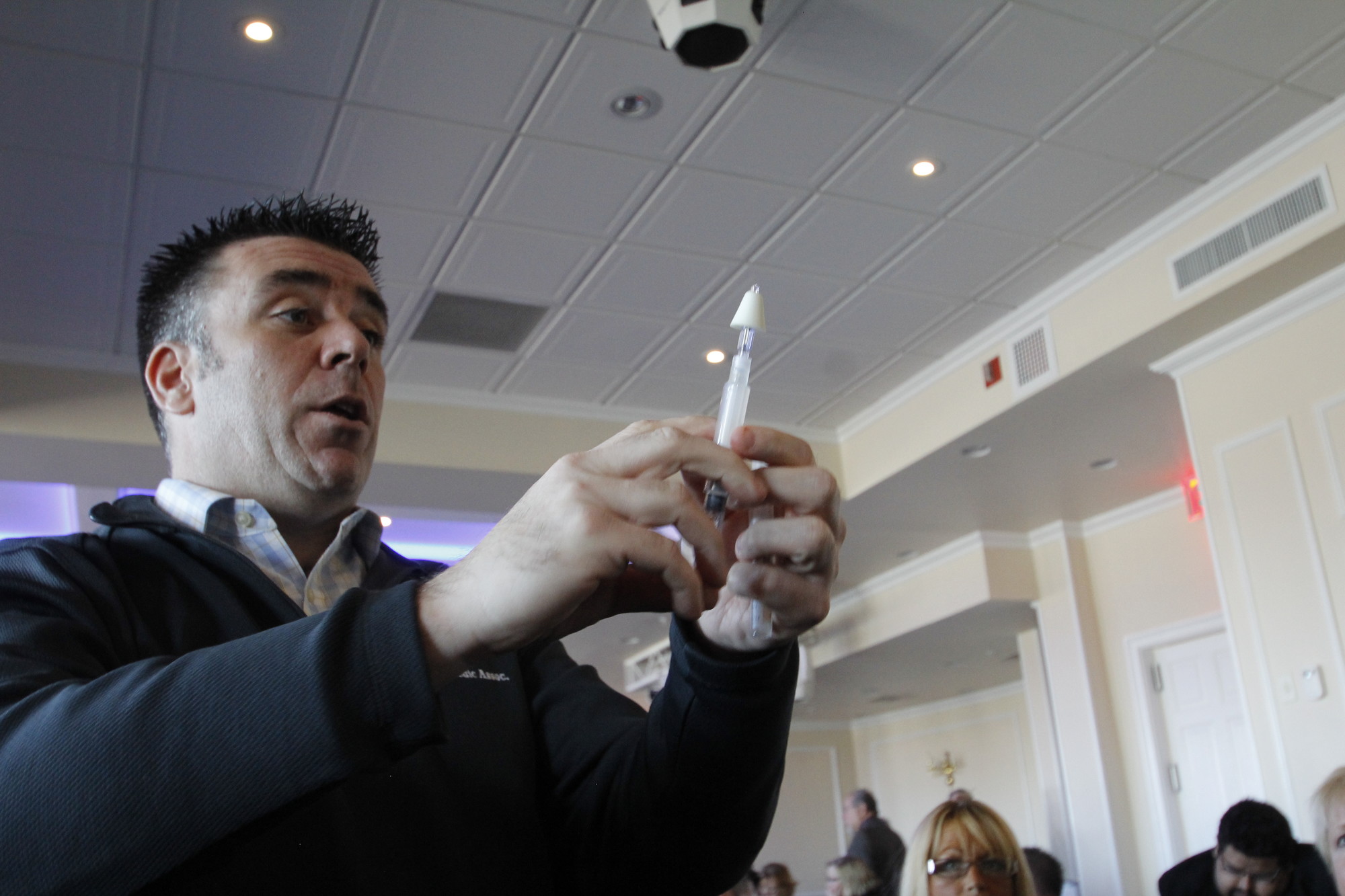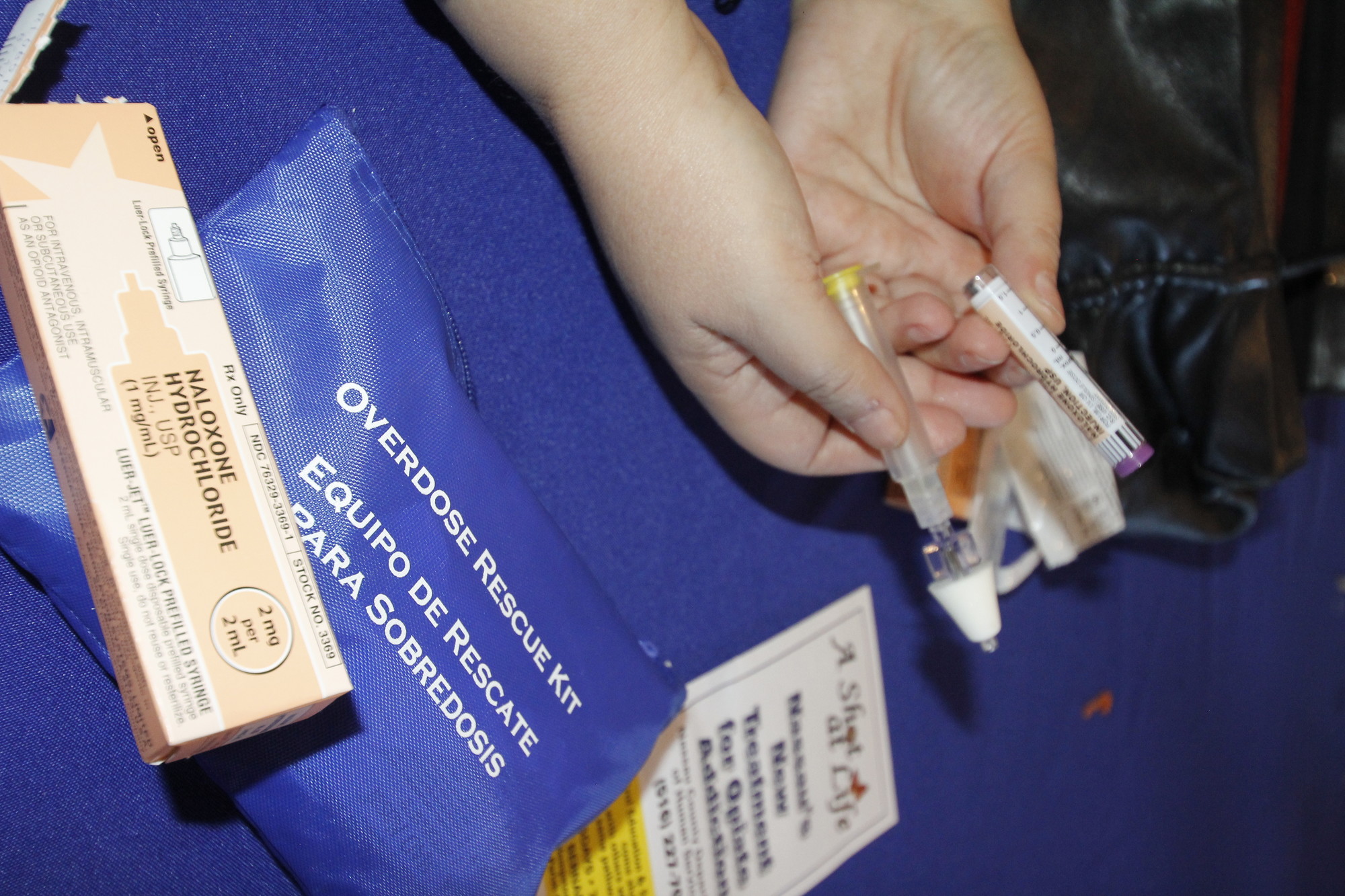A fight against a ‘family disease’
Heroin Summit participants hope to end the stigma of addiction
One of the poshest caterers on Long Island was the site last week of a conference on heroin that included experts from the worlds of education, social work, government and law enforcement, as well as former abusers.
Linda Mangano, the wife of Nassau County Executive Ed Mangano and an anti-drug activist, opened the so-called Heroin Summit at the Coral House in Baldwin. Often choking up, Mangano told a story of a young girl she had known since the girl was a baby. She became a heroin addict.
“I saw this talented, beautiful girl drift into her disease,” Mangano said. “This is a family disease. Parents feel unnecessary stress and unnecessary anguish. They shouldn’t feel that way.”
Eventually, Mangano said, the girl, Megan, managed to recover from her addiction — and then she proved it when the girl, now a woman, stood before the audience of over 500.
“That girl, that beautiful girl, that I spoke of before is not the same,” Mangano said. “She’s better, and she’s right here.” As Megan stood at the podium, the crowd rose in a standing ovation.
One of the highlights of the event came at the end, when the audience was offered the chance to sign up to become certified in Narcan administration. Narcan is a widely used antidote to heroin overdoses that has recently become available over the counter to the public.
Another high point came when Mangano and his Suffolk County counterpart, Steve Bellone, announced that the two counties would form a partnership to fight what Mangano called the “scourge” of heroin addiction on Long Island.
But much of the conference focused on the stories told by people who were directly affected by heroin abuse — stories that were, by turns, tragic and inspirational.
John Priest, assistant Nassau County fire marshal, told a tragic one, of losing his son, a lieutenant in the East Meadow Fire Department, to heroin addiction. “He was my best friend, and he was a drug addict,” Priest said. “We missed the signs.”
Among them, he said, was the frequent nasal congestion that his son suffered and that the family unknowingly attributed to allergies.

 50.0°,
Overcast
50.0°,
Overcast 









